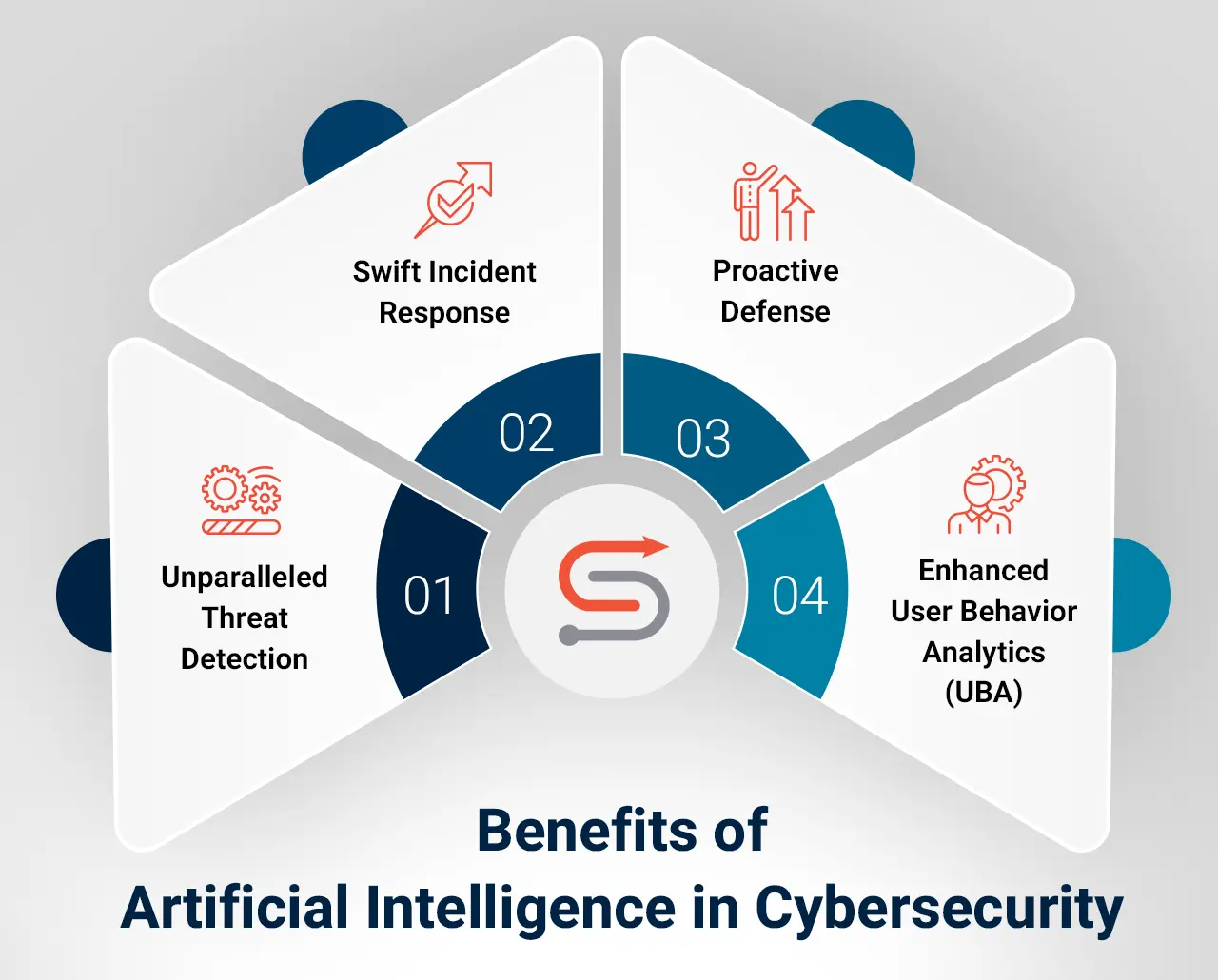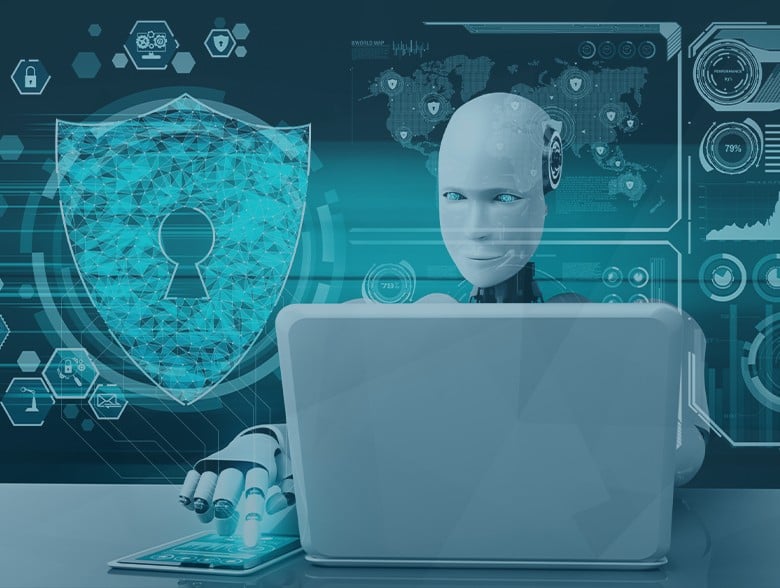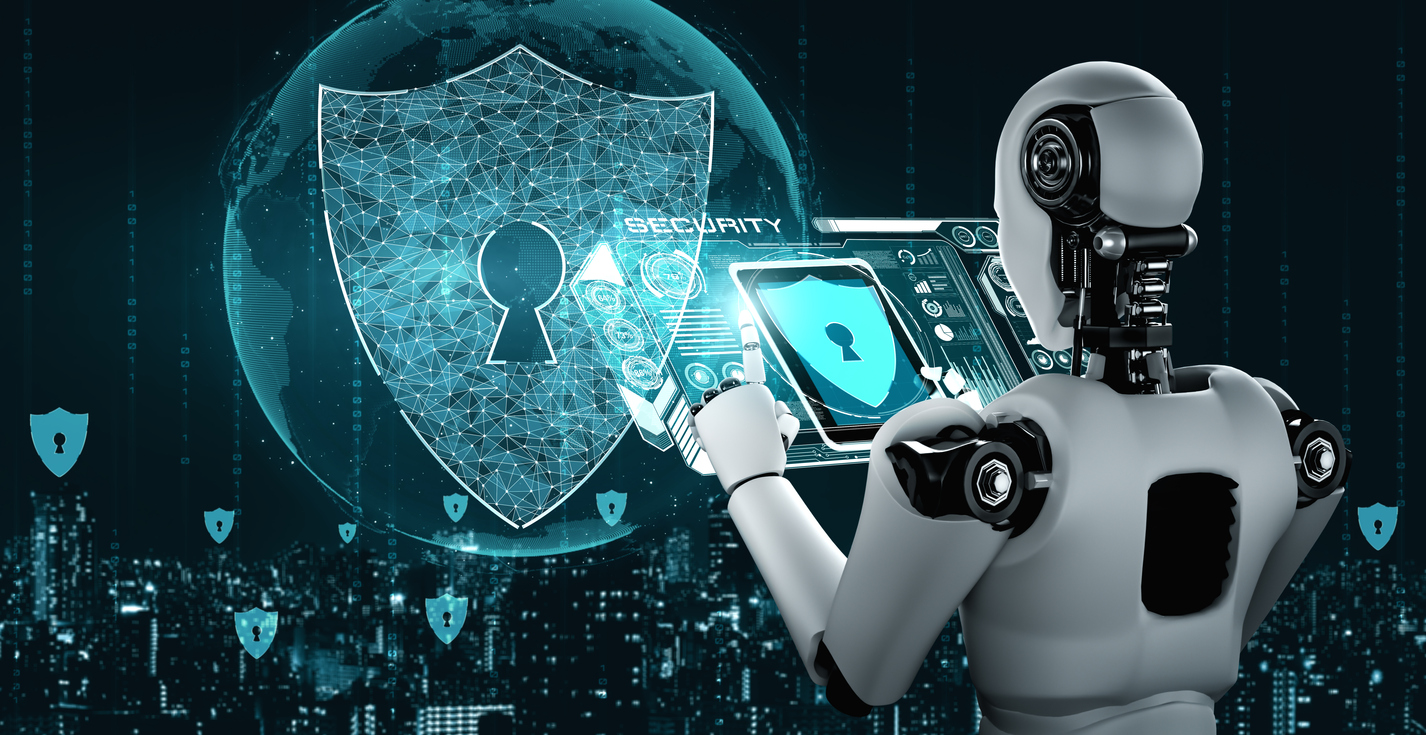In a world of virtual technologies, online security remains a major concern for companies worldwide. With the evolution of sophisticated cyber threats, traditional security methods have proven unsuccessful.
Cyber risks have unseated traditional technologies, forcing artificial intelligence (AI) to step in with its extraordinary capabilities.
But in the first place, what does AI stand for in the cybersecurity context? And how can AI help the cybersecurity of digital assets revolutionized?
This article intends to let us read between the lines of the cybersecurity artificial intelligence domain, explain the future challenges and trends, and present the areas in which AI applies.
The Role of AI in Protecting Against Cyber Threats

Source: Synoptek
The main objective of AI in cybersecurity is threat detection. Typically, conventional security systems rely on predefined rules and signatures to identify threats. These methods might not always work against attacks that are new, or not previously known.
Machine learning algorithms are able to help AIs detect cyber-related threats based on hidden meta-features. They are able to evolve by reconfiguring parameters according to the new situation.
Another major functionality of AI is that it has the ability to respond to threats in an instant, which means the pertinent response time drastically gets reduced.
By constantly watching network traffic and system behavior, AI-driven systems can watch for suspicious patterns and act immediately when unexpected events occur, such as isolating affected systems or informing security personnel.
AI Applications in Cybersecurity

1. Threat Detection
Feeding in historical data into machine learning algorithms is a comparison between a problem that you are experiencing now and the one you have already observed. Consequently, banking on historical information and the generated synthetic data alongside those from real instances is extremely important.
AI can also be trained as a model via some algorithms; thus, it can decide which actions are the best to take when it encounters similar cases in the future. For instance, machine learning algorithms can be trained on historical data to recognize the signatures of various cyber attacks.
When these patterns reappear in new data, the AI system can flag them as potential threats. So, in conclusion, AI has become particularly effective in dealing with those kinds of attacks similar to Zero-day exploits.
2. Man In the Middle (MITM) Attacks
A man in the middle attack occurs when a third party intercepts and alters communication between two parties that believe they are directly communicating.
AI systems can use synthetic monitoring tools to check network traffic for signs of MITM attacks, such as unusual routing or changes in data patterns. One of the best ways to save yourself from it is to download a VPN for PC. This VPN encrypts your internet traffic and thus shields you from cyber attacks.
It is easy to Set up VeePN for Windows or any other operating system and protect your online activities. VPN creates a secure connection between you and the internet by encrypting your data and routing it through a server in another location, making it difficult for hackers to intercept and alter your communication.
3. Phishing Prevention
Phishing is known to be a leading cause of cyber insecurity policy and that’s why email and web security play a major role. To prevent phishing attacks, AI has been used to screen emails and web pages in search of cyber-drills or hints at violence.
One way to make computers understand the natural language is to use NLP processing techniques that help it derive context and meaning from human text.
These techniques enable AI to read and interpret human language, distinguishing between legitimate and scam emails. By helping users identify potentially dangerous emails and pages, AI
Trends and Emerging Technologies

The future of AI in cybersecurity is set to improve further as new technologies are developed with the purpose to strengthen our current systems.
- A significant trend lies in AI and blockchain technology integration. The immutable trust ledger of blockchain is one of the major ways in which its decentralized feature enhances AI’s security.
- The next is the use of AI in predictive analytics. By examining historical data and then capturing patterns, AI can predict future intervention probabilities. These prospective actions allow companies to develop more robust defenses and minimize a possible threat.
- Another technique that is more alive in AI is explainability that addresses the so-called, “black box” issue. It could be defined as a condition when the inner workings of the AI model are either not shown or are not easily understood by users.
As AI models gain in transparency, companies are provided with trustworthy and secure means to protect themselves against cyber disruptions.
Another important aspect of AI-driven cybersecurity is its role in real-time monitoring and threat detection. Businesses and individuals can use AI-powered tools to continuously track suspicious activity across devices and networks, identifying potential breaches before they escalate.
Similarly, advancements in remote monitoring solutions have made it easier to keep an eye on digital activity across multiple devices. For those looking for ways to enhance security, tools that allow you to monitor another phone can be useful when used responsibly, ensuring better control over sensitive data and preventing unauthorized access.
To Sum it Up
In summary, smart AI tools have become a must-have weapon in the battle against cyber threats. Due to the ongoing progress in technologies, AI will be more involved in the cybersecurity sphere as a whole and, thus, helping companies make their digital assets safer.
It is imperative, nonetheless, to address the inevitable challenges raised and the ethical considerations that arise from the AI adoption. This is how we can make sure that AI in cybersecurity is utilized in a responsible and reliable manner to meet the future’s requirements in security.